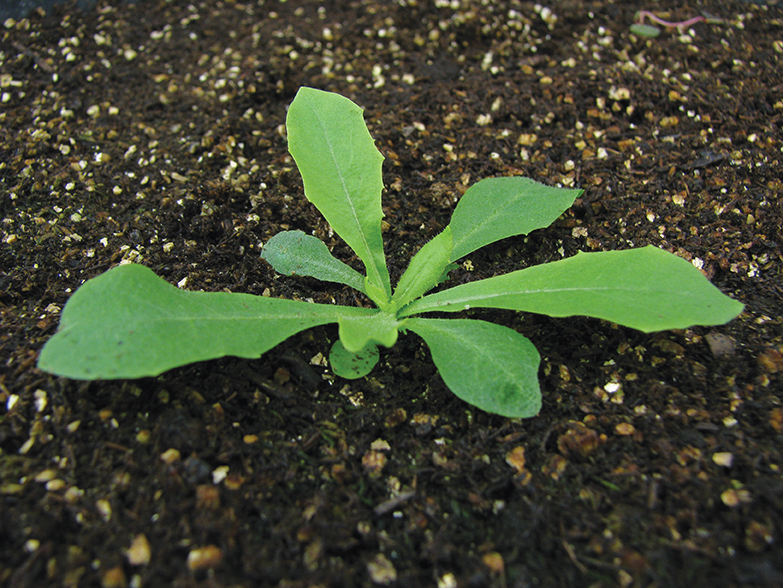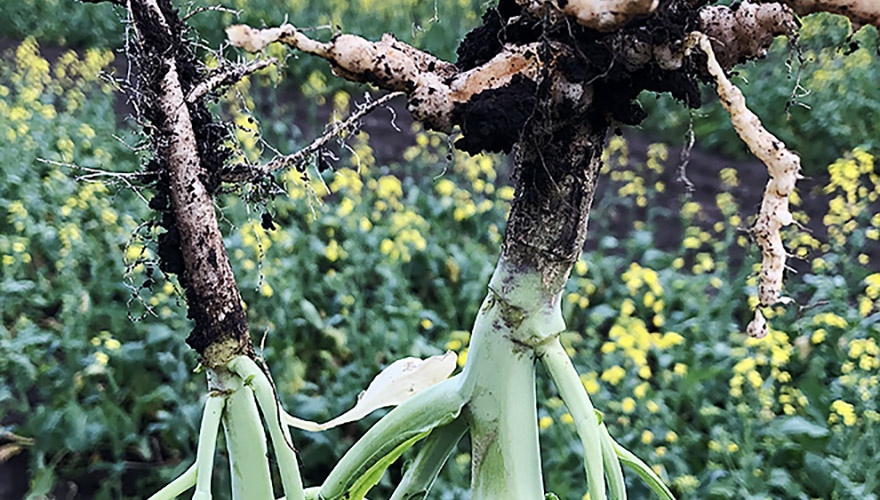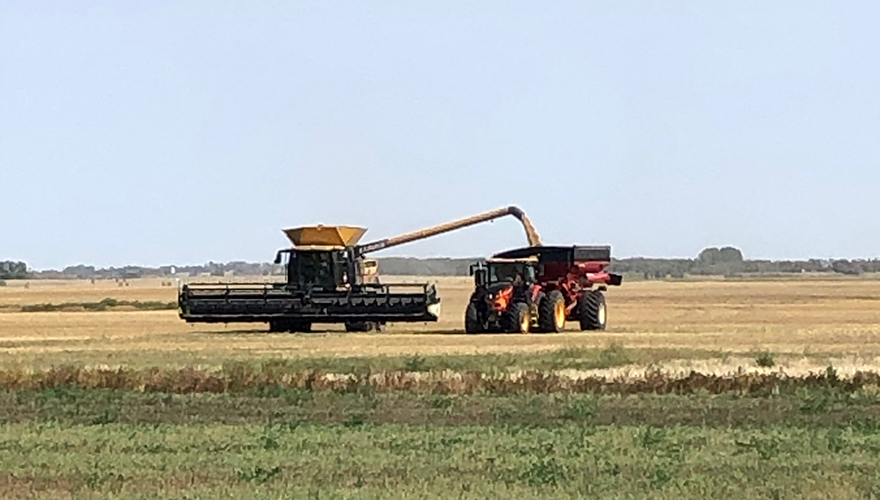Posted March 22, 2017
PRE-SEED GLYPHOSATE ALONE IS NOT ENOUGH. HERE'S WHY.
Brought to you by Dow AgroSciences
Controlling weeds with a pre-seed glyphosate application has become standard practice in much of Western Canada. The question is: is applying glyphosate alone in the spring the best practice? The answer is no. While there are many advantages to using the pre-seed application to manage weeds, there are many reasons why glyphosate alone is not enough for effective pre-seed weed control. Here’s a look at some of them.
Control of key weeds
Pre-seed applications offer real advantages, but glyphosate alone does not provide full control of some winter- and spring-emerging annuals. “Cleavers, dandelion, narrow-leaved hawk’s beard and flixweed are all weeds to control early,” explains Brian Wintonyk, agronomist with Dow AgroSciences. “In areas where spring moisture levels are high, they regrow quickly as the soil warms up, so controlling them prior to seeding is very important.”
Tough winter annuals
Winter annuals like narrow-leaved hawk’s beard, cleavers, chickweed and stinkweed emerge in late fall and overwinter as rosettes or 3- to 4-leaved seedlings. Come spring, they often have a head start on crops, outcompeting it for moisture and nutrients. Controlling winter annuals with glyphosate is enhanced by using appropriate tank-mix combinations.
Flushing weeds
Given the weed seed bank in the soil, weeds like wild buckwheat, cleavers, dandelion, scentless chamomile, shepherd’s purse and stinkweed can produce multiple flushes of emerging weeds. Glyphosate only alone controls weeds that are actively growing at the time of application, leaving flushing weeds to keep coming back.
Weeds that have yet to emerge
“Many weeds germinate or re-grow after a pre-seed application, resulting in early weed competition for the emerging crop. A more effective alternative is to use a product that will continue to control flushing weeds after application,” says Wintonyk.
Volunteer canola
Volunteer canola is a serious weed problem that continues to grow. “This will continue to be an emerging issue due to the 8.5 million acres of Roundup Ready® canola grown annually in Western Canada,” Wintonyk says. “Glyphosate alone only controls emerged InVigor® and Clearfield® canola volunteers.”
How volunteer canola can impact crops:
- Yield loss through competition for nutrients and moisture
- Decreases grain quality due to increased dockage
- Can act as a host for blackleg and clubroot diseases increasing the level of disease inoculum which impacts future canola crops
- Increases flea beetle pressure in the area (because the seed is untreated)
Glyphosate resistance
Another important reason to consider using more than just glyphosate for pre-seed weed control is the growing concern about glyphosate resistance. Glyphosate contains just one active ingredient and works through one mode of action. Effective herbicide resistance management requires the use of products with multiple modes of action that deliver overlapping activity on the same weeds.
Early seeding
Research suggests yields increase with early seeding*. Seeding early, in mid to late April or early May, allows the crop to make good use of available moisture, get a head start on weeds and flower earlier, resulting in less heat stress. Early-seeded cereals produce higher grain quality and increased yields when seeded into clean fields. To produce top yields, early weed control is essential.
Effective alternatives
Many of the problems described here can be overcome by choosing a pre-seed herbicide that delivers multiple modes of action and SoilActive™ Technology. By choosing a product that works through multiple modes of action, growers can help manage the issue of herbicide resistance, slowing the development of glyphosate-resistant weed populations.
SoilActive Technology provides an effective alternative. “SoilActive Technology hits harder and lasts longer than glyphosate alone. Using it allows growers to spray earlier and get ahead in the spring,” says Wintonyk. SoilActive Technology controls both actively growing weeds and those that have not yet emerged for 15-21 days after application. It allows growers to spray earlier and trust the technology to control weeds until their crop is in the ground.
“Using a SoilActive product, growers can spray two weeks ahead of seeding. As susceptible weeds emerge in treated fields, they take up the active ingredient through the root system and it stops plant growth,” Wintonyk says.
Susceptible weeds include volunteer canola, wild buckwheat, flixweed, cleavers, stinkweed, chickweed and more. “SoilActive control sets growers up for a good start in the spring, allowing them the flexibility to choose which fields they will start on when. This conserves moisture, reduces weed competition and supports superior crop establishment,” says Wintonyk.
Pre-seed weed control is definitely an effective and important consideration for growers who want to make the most of this year’s crop. For best results, consider herbicide options that offer SoilActive Technology and multi-mode of action weed control. Then choose the most effective product for your unique situation, rather than just going with the standard practice.
Learn more about pre-seed herbicide options at LeaveNothingBehind.ca
Always read and follow label directions.
*According to Manitoba Agriculture, Food and Rural Development (MAFRD)
RoundupReady® is a trademark of Monsanto Technology LLC. InVigor® is a trademark of the Bayer Group. Clearfield® is a registered trademark of BASF. ® ™ Trademark of The Dow Chemical Company (“Dow”) or an affiliated company of Dow.
FEATURED LINKS
NEWSLETTER
Want to stay caught up in all things agriculture? Sign up for the newsletter and get all the latest news straight to your inbox.
Managing Volunteer Canola
Posted April 11, 2017







